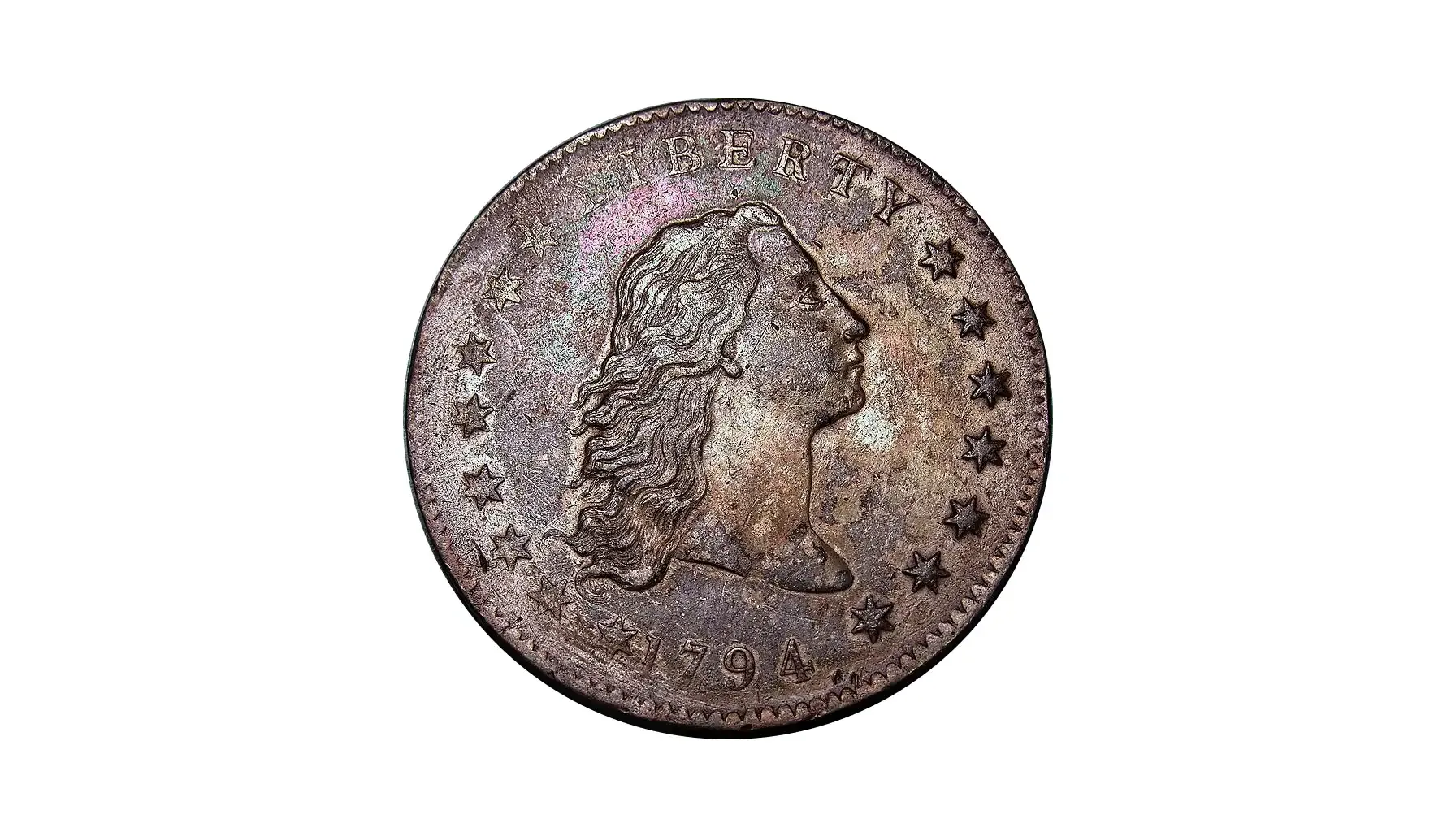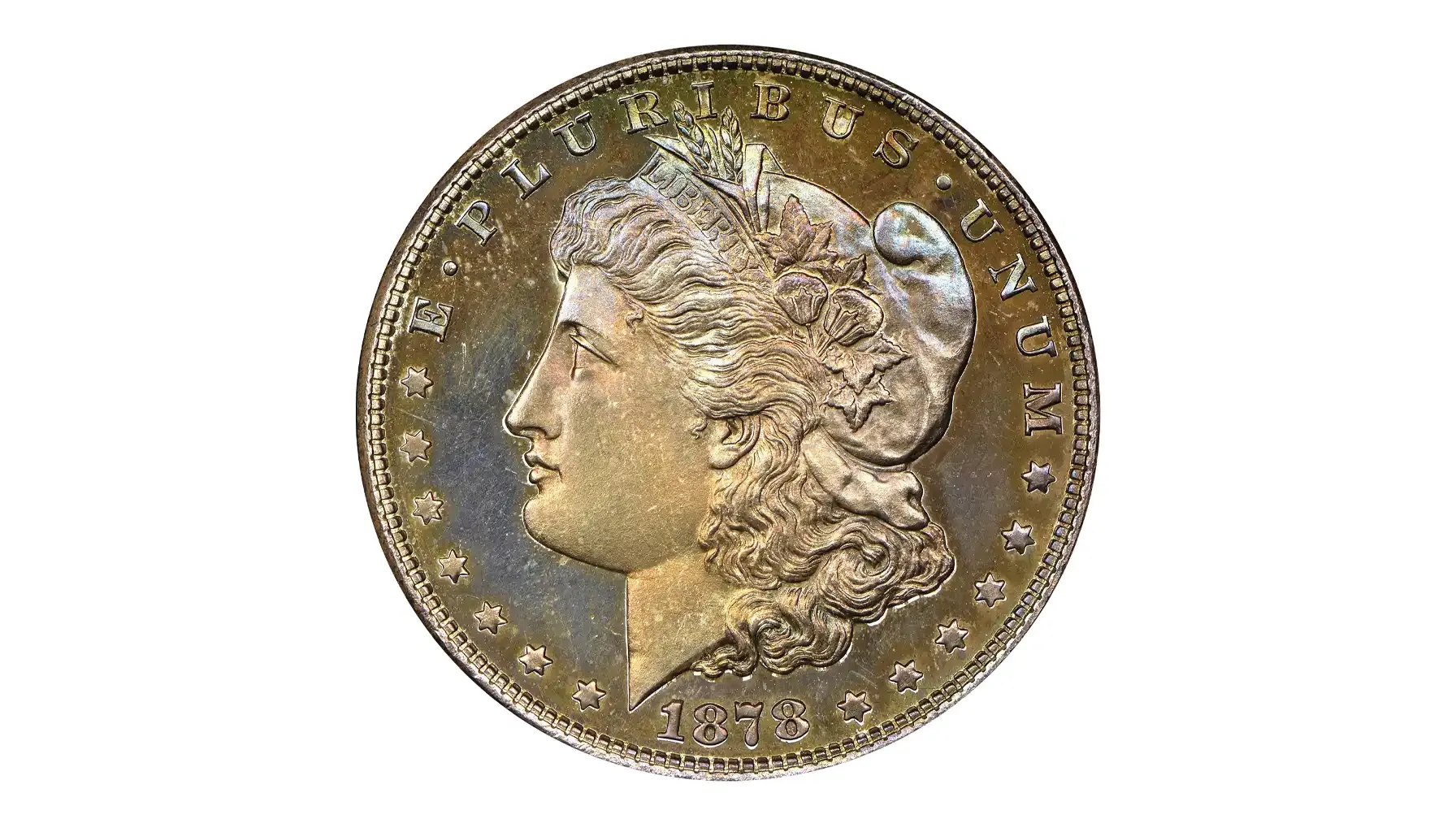Contents:
The Washington Quarter mint mark is a symbol of memory and history of an entire era. Without false modesty, it can be said that these coins are ones of the most recognizable pieces in U.S. history.
Its issue began in 1932, in honor of the 200th anniversary of George Washington's birth.
But how did this coin, originally designed as a commemorative one, become widely circulated and one of the most mass-produced coins in circulation? What are the most prominent Washington Quarter mintage figures, and which years of minted quarters have become particularly interesting to collectors?
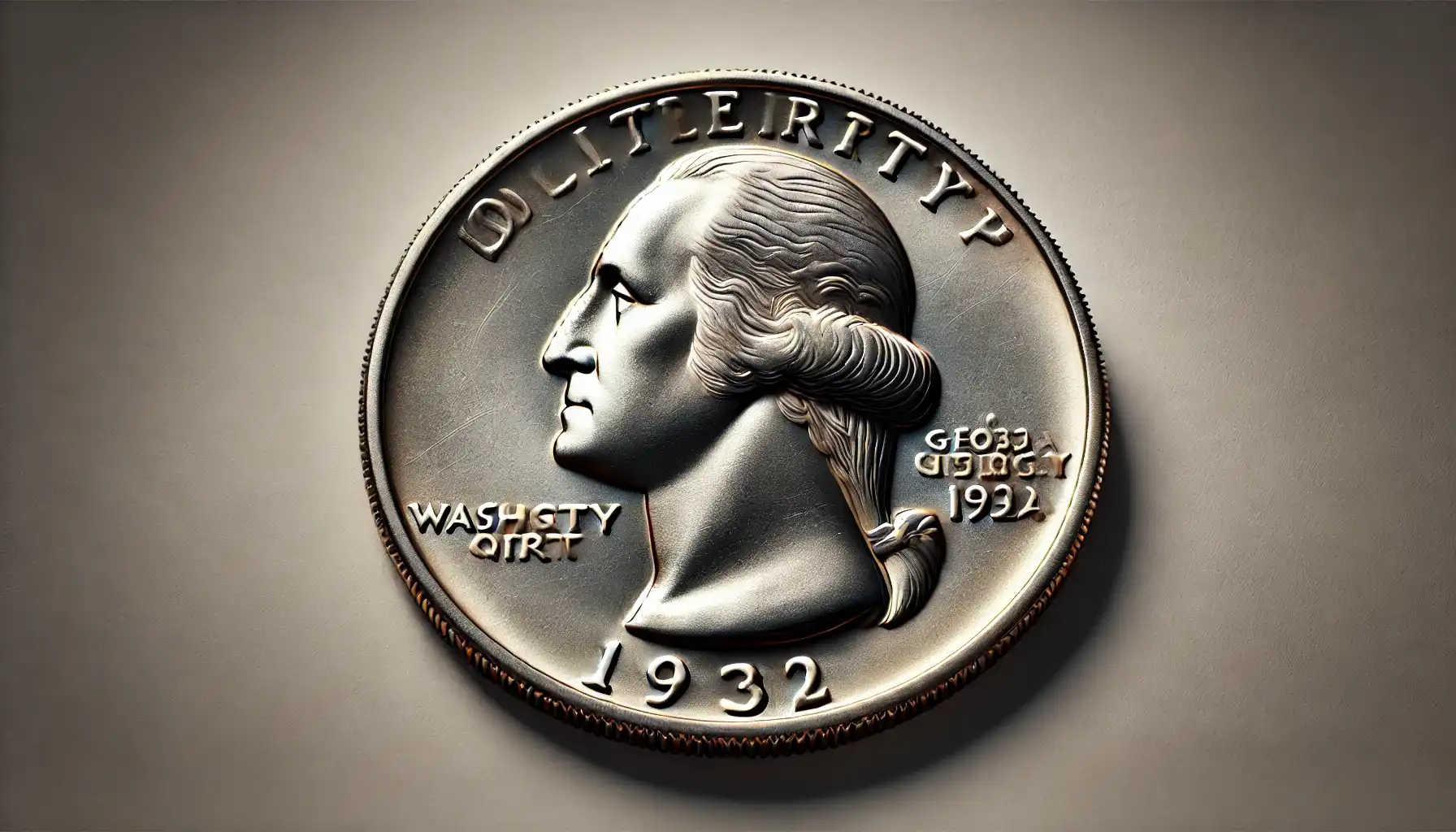
The Origin of the Quarter
It is not an early American coin. The history of the Washington quarter dates back to 1932, when this legendary coin was issued to commemorate the 200th anniversary of the birth of the first U.S. President George Washington. The coin was originally minted in silver, which added to their value, but its design and denomination have remained unchanged over the decades.
Originally, the coin was intended to be a commemorative coin, but economic changes in the mid-twentieth century led to silver Washington quarter mintage being replaced with cheaper materials, making it a mass-produced coin.
Characteristics | Details |
Year of issue | 1932, 1934 – present times |
Metal (until 1964) | Silver (900 proof) |
Metal (since 1965) | Copper-nickel alloy |
Weight | 6.25 g (silver), 5.67 g (copper-nickel) |
Diameter | 24.26 mm |
Design
John Flanagan designed the obverse and reverse. Laura Gardin Fraser, winner of the coin design competition in 1931, proposed an alternative design with a bust of Washington, but it was rejected in favor of Flanagan's work. Nevertheless, her design influenced the final image.
Obverse: Profile of George Washington, the inscription “LIBERTY” and the motto “IN GOD WE TRUST”. The year of minting is indicated under the portrait.
Reverse: White-headed eagle (symbol of the USA) sitting on a bundle of arrows, holding an olive branch in its talons, symbolizing strength and peace. Above the eagle is the inscription “UNITED STATES OF AMERICA”, below is “E PLURIBUS UNUM”, and at the bottom of the coin is its denomination - “QUARTER DOLLAR”.
The design has also undergone some changes over time: starting in 1999, the 50 States program began, during which the reverse of the coin each year featured a different symbol and landmark from each of the 50 US states (i.e. Washington State Quarter mintage). This program ended in 2008 and was followed by a series commemorating national parks, U.S. territories and important events in the country's history.
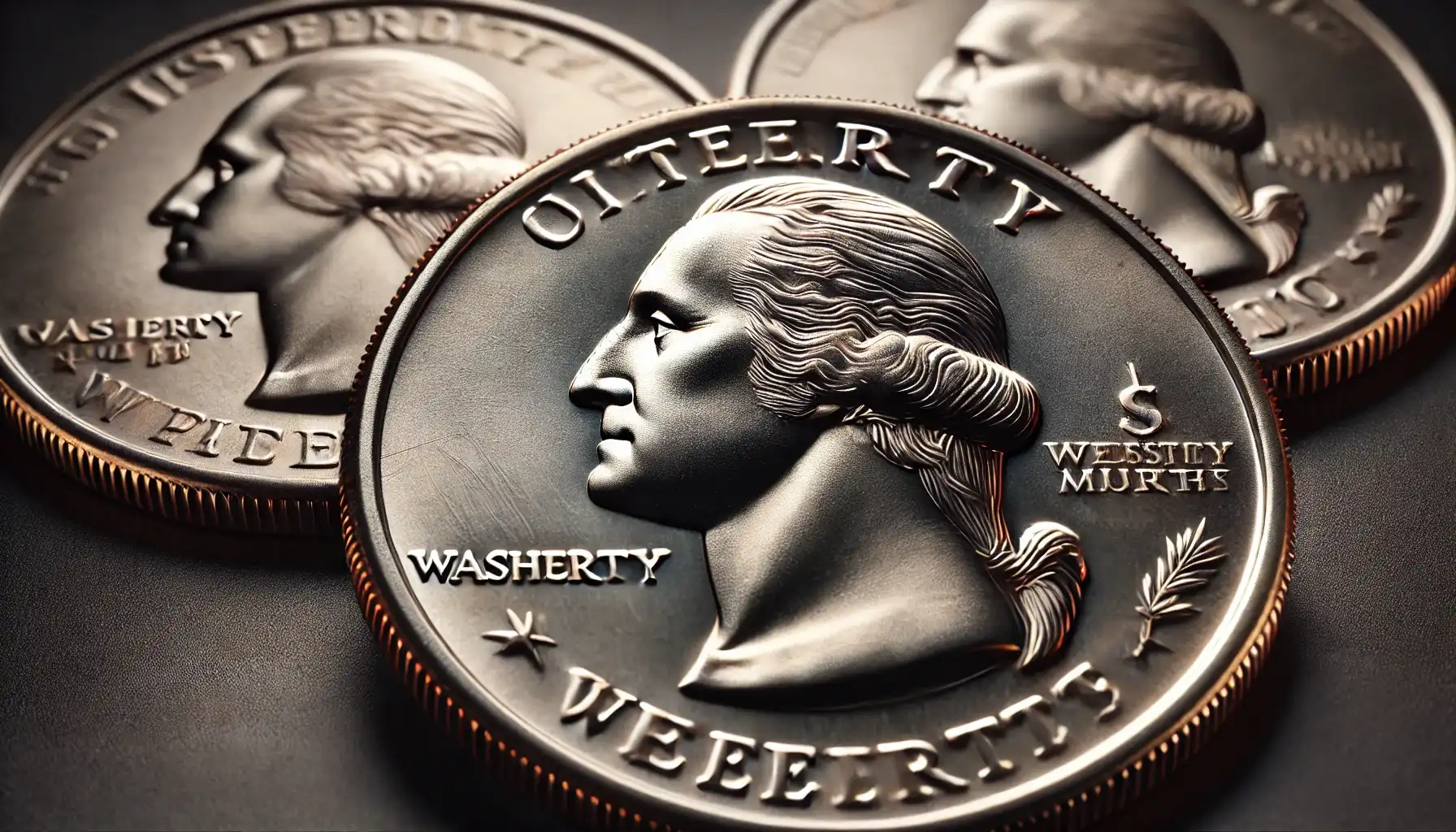
Washington Quarter Mintage by Year: Most Wanted Ones
1932: The Very Beginning
The Washington quarter debuted during a difficult economic period - the Great Depression. In the first year, coins were issued at three mints:
Philadelphia | 5,404,000 coins |
Denver | 436,800 coins |
San Francisco | 408,000 coins |
The first year of coins issued is characterized by the lowest mintage quarters. Thus, Washington quarters with D (1932-D Washington quarter mintage) and S mint marks are considered the rarest and most valuable and can cost from several hundred to several thousand dollars depending on condition.

Mid Century
The period from the early 40s to the mid-60s was a time of mass minting of quarters, especially against the backdrop of World War II and subsequent economic changes.
However, prior to 1964, these Washington silver quarter years were still there. The “S” quarter mint mark stands out in this period as San Francisco's mintage was lower than other mints.
1964: Turning Point
1964 was the last year with Washington quarter mintage figures with 90% silver. In 1965, coins began to be made of copper-nickel alloy. This event effectively ended the era of silver coins in the United States.
The mass minting of coins with the new composition (about 500-800 million in total) led to the quarters becoming more affordable for everyone. And who knows, maybe you will find one coin in your pocket change?
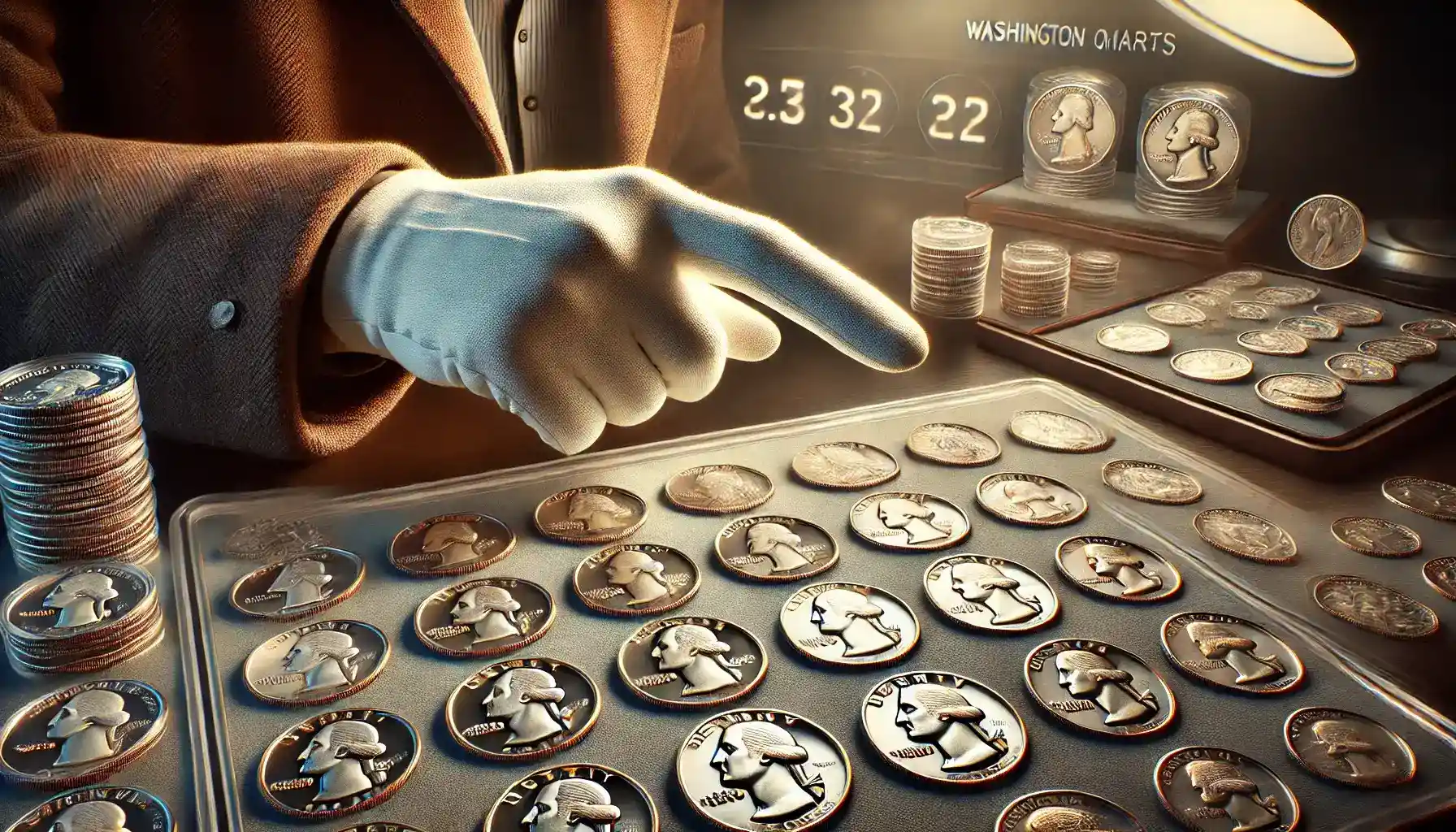
2021 Washington Crossing the Delaware Quarter Mintage
The 2021 Washington quarter mintage is part of the America the Beautiful Quarters Program, which commemorates significant events in American history. The coin celebrates George Washington’s leadership during the Battle of Trenton in 1776.
Obverse (Front): A standard design of George Washington’s portrait, as designed by John Flanagan in 1932, with the inscriptions "LIBERTY", "IN GOD WE TRUST", and the year of minting.
Reverse (Back): A scene of George Washington crossing the Delaware River on the night of December 25, 1776. The reverse design shows Washington standing in the bow of a boat, leading his troops across the icy river. This artwork is based on the famous painting by Emanuel Leutze.
Inscriptions: “UNITED STATES OF AMERICA,” “E PLURIBUS UNUM,” and “QUARTER DOLLAR.”
Feature | Details |
Metal Composition | 91.67% Copper, 8.33% Nickel |
Weight | 5.67 grams |
Diameter | 24.3 mm |
Edge | Reeded |
Mint Location | Philadelphia (P), Denver (D) |
Denomination | Quarter Dollar ($0.25) |
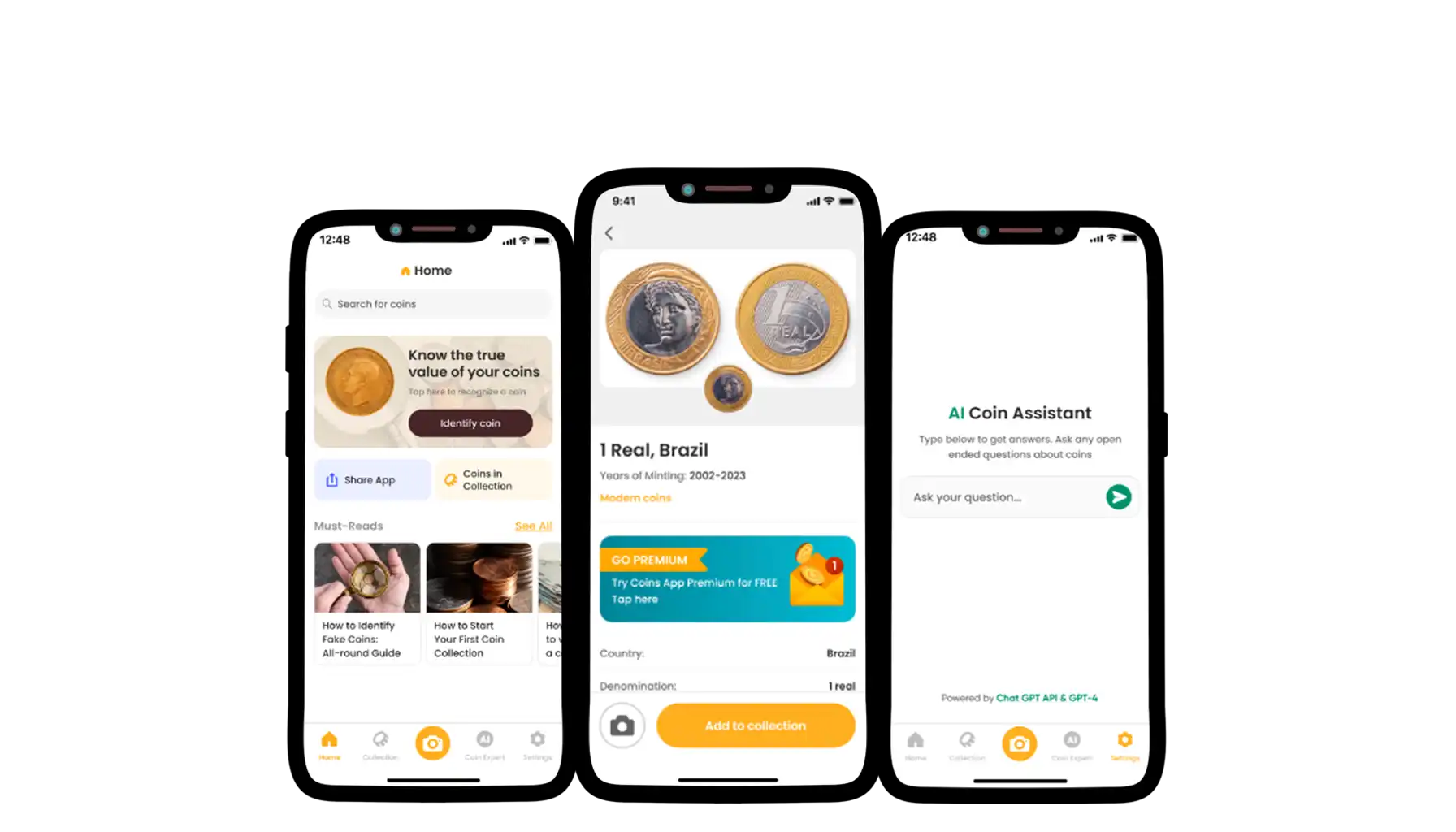
Washington Quarter Years of Minting Errors
1970 Year and Doubled Die Obverse Error
This is one of the most famous errors found on 1970 coins (especially those issued in Denver with the “D” mint mark). These Washington Quarters are known for a double strike on the obverse, i.e. the image of George Washington on the obverse and the inscriptions on the coin, such as “LIBERTY” and “IN GOD WE TRUST,” are slightly offset and appear to be double struck.
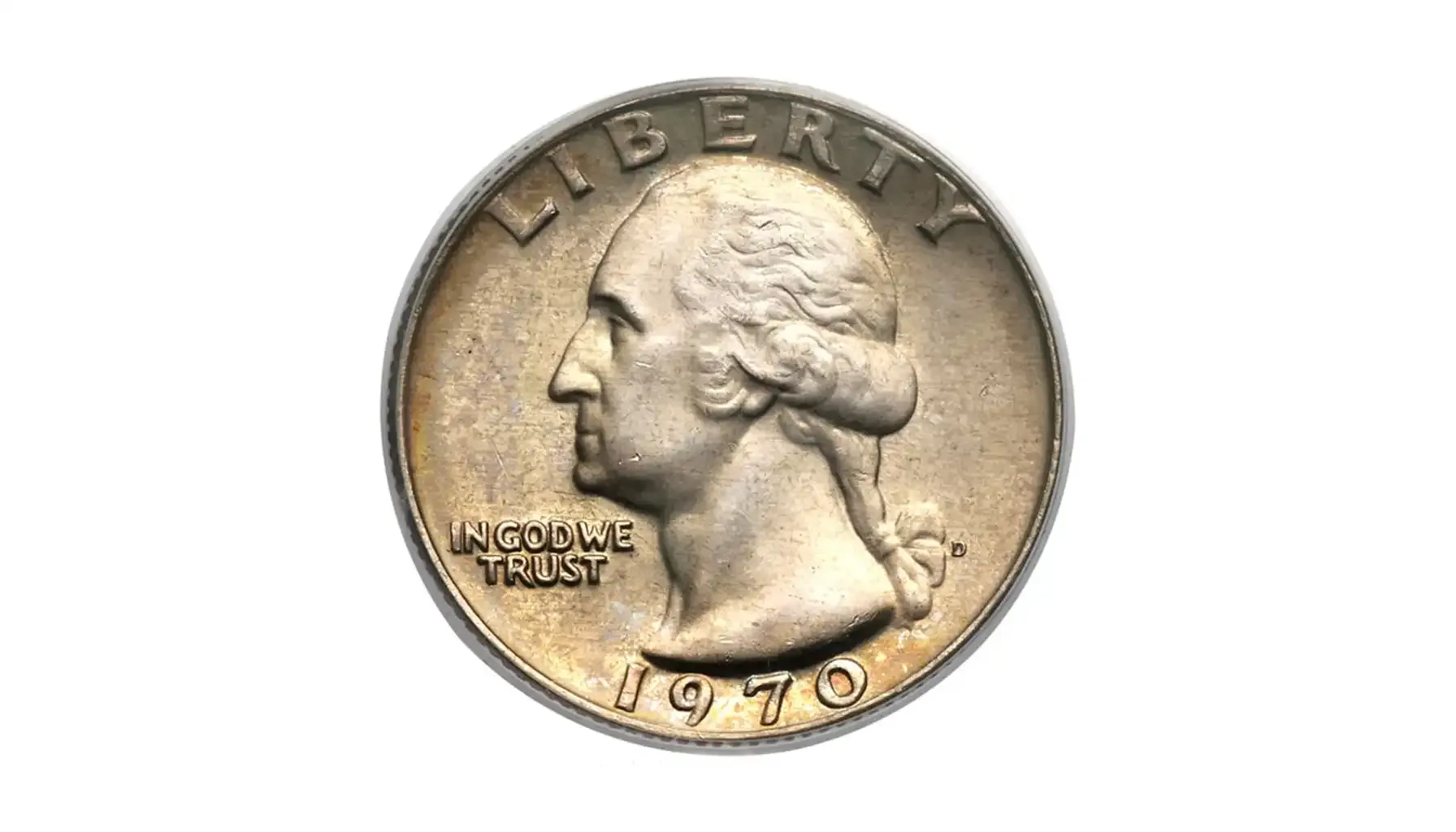
1983 Year and Defective Die Error
1983 Spitting Eagle Quarter is known for its unique error on the reverse. On this coin, you can see a line coming from the beak of the eagle as if it were “spitting”. This line is due to a micro-crack on the die used to mint the coins.
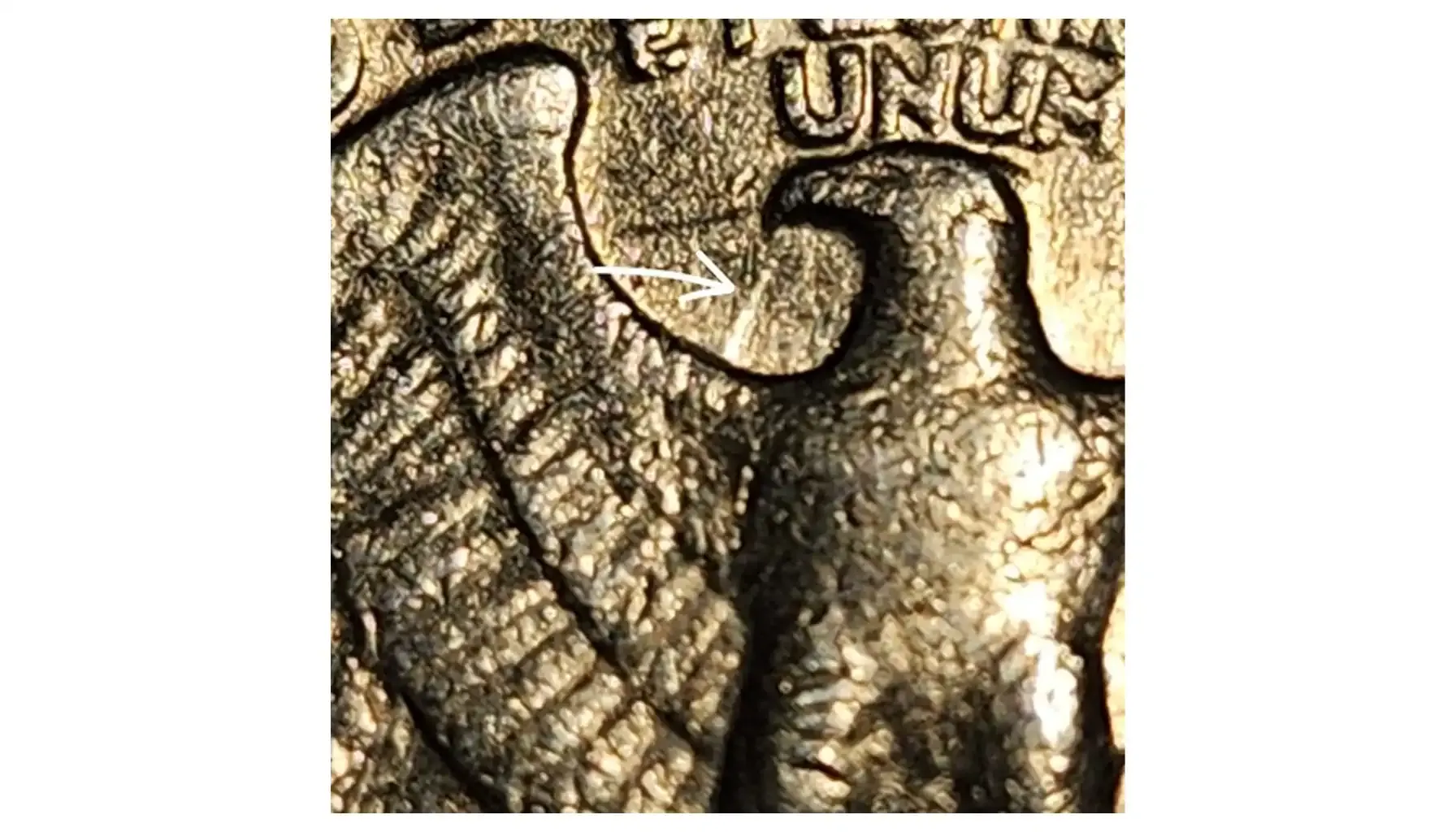
Washington Quarters Investment Potential
The value and cost of Washington quarters varies depending on rarity, condition, and the minting errors present. Some particularly striking examples of the coin (error or limited mintage coins) can increase in value significantly in the collector market.
Below is a table with the estimated value of the most prominent Washington quarters that can be a profitable investment for numismatists.
Coin | Estimated Value |
1932 D | $1,000 - $15,000 (MS63 to MS65+) $100 - $800 (VG or F) |
1932 S | $800 - $12,000 (for MS65 and higher) $100 - $500 (VF or F) |
1940-1960 S | $5 - $200 |
1970 D Double Die Error | A few hundred dollars - $2,500 |
1983 P Spitting Eagle | $100 - $500 for well-preserved example |
1999-2009 50 State Quarters Program | $1 - $50 (depending on the State and condition) |
In a world where millions of quarters have been minted over decades, finding truly valuable coins can be a challenge. However, the Coin ID Scanner app makes the process much easier. Due to this app you will be able to quickly scan coins, determine their year of issue, condition, and even approximate value. The app is especially useful for amateurs who want to understand if their coin is worth the attention of collectors.
The history of the minting of the Washington quarter is full of fascinating twists and turns. From the rare 1932 issues to the mass minting during the era of economic growth, each year has its own distinct characteristics.
And despite the fact many coins seem everyday, each one hides a unique story that can be uncovered with careful analysis, the right knowledge, and modern tools.

